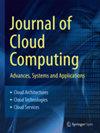多模态数据轨迹预测:综述
IF 3.7
3区 计算机科学
Q2 COMPUTER SCIENCE, INFORMATION SYSTEMS
Journal of Cloud Computing-Advances Systems and Applications
Pub Date : 2023-07-01
DOI:10.1109/CSCloud-EdgeCom58631.2023.00010
引用次数: 0
摘要
轨迹预测是指根据物体、人或车辆过去的运动轨迹信息和其他相关环境信息,预测物体、人或车辆未来的运动。传统的轨迹预测方案适用于简单的驾驶场景,只适用于短期预测。随着计算能力和数据处理速度的提高,人们可以更快地分析和利用大规模数据集,使用更多的数据和更复杂的算法来构建模型,从而更好地预测未来的趋势和行为。此外,不同的解决方案侧重于如何有效地从不同类型的信息中提取特征,以及如何更准确地预测目标物体的未来轨迹。我们的目标是分析不同信息对预测的影响,并对基于相同数据的车辆或周围行人的基于深度学习的轨迹预测方法进行分类和比较。根据输入的类型和数量将其分为五类,并详细阐述了不同信息解决方案的使用和预测效果。本文章由计算机程序翻译,如有差异,请以英文原文为准。
Multimodal Data Trajectory Prediction: A Review
Trajectory prediction refers to predicting the future movement of an object, person, or vehicle based on past motion trajectory information and other relevant environmental information. Traditional trajectory prediction solutions are suitable for simple driving scenarios and only applicable for short-term predictions. With the improvement of computing power and data processing speed, people can analyze and utilize large-scale datasets faster, use more data and more complex algorithms to build models, and therefore better predict future trends and behaviors. In addition, different solutions focus on how to efficiently extract features from different types of information and how to more accurately predict the future trajectory of the target object. Our goal is to analyze the impact of different information on prediction, and to classify and compare deep learning-based trajectory prediction methods for vehicles or surrounding pedestrians based on the same data. According to the type and quantity of inputs, they are divided into five categories, and the use and prediction effect of different information solutions are elaborated in detail.
求助全文
通过发布文献求助,成功后即可免费获取论文全文。
去求助
来源期刊

Journal of Cloud Computing-Advances Systems and Applications
Computer Science-Computer Networks and Communications
CiteScore
6.80
自引率
7.50%
发文量
76
审稿时长
75 days
期刊介绍:
The Journal of Cloud Computing: Advances, Systems and Applications (JoCCASA) will publish research articles on all aspects of Cloud Computing. Principally, articles will address topics that are core to Cloud Computing, focusing on the Cloud applications, the Cloud systems, and the advances that will lead to the Clouds of the future. Comprehensive review and survey articles that offer up new insights, and lay the foundations for further exploratory and experimental work, are also relevant.
 求助内容:
求助内容: 应助结果提醒方式:
应助结果提醒方式:


